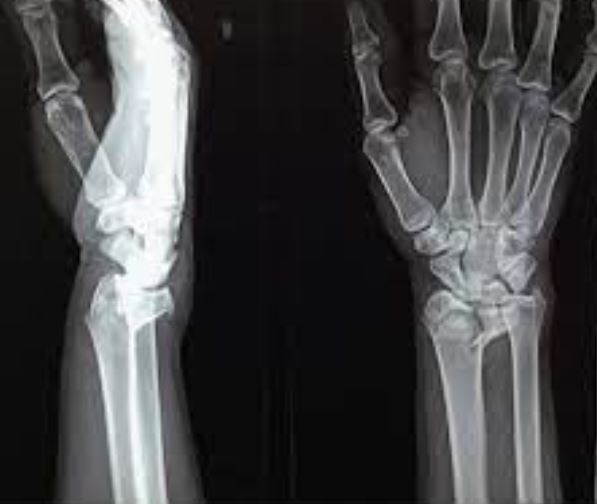A study of correlation between radiological and functional outcome of distal radius fracture treated by various modalities
Abstract
Background: Distal radius fractures are one of the most common injuries to the musculoskeletal system. Functional outcome in these fractures depend on many factors. Our main aim was to study if good radiological outcome has any effect on functional outcome and to compare various modalities of treatment of fracture distal end radius
Method: We retrospectively studied 120 patients. 30 cases were treated with conservative management & 30 cases with volar plating, percutaneous pinning and JESS fixator (Joshi’s External Stabilizing System).
Results: Most of the patients were between 40-60 years (Mean 50.35 years). Most common mode of injury was RTA (50.3%), Right side was predominantly affected (60.3%) and most common fracture type was AO type C1. Mean pain score & Function score Patient Rated Wrist Evaluation (PRWE) were less among patients where radiological parameters were restored.
Conclusion: From this study, we conclude that restoration of radiological parameters will help in good functional outcome in treatment of intra-articular and extra articular fractures of distal end of radius and volar plating has better results in radiological parameter restoration and functional outcome.
Downloads
References
Nelson DL. How to classify distal radial fractures - a report. eRADIUS International Distal Radius Fracture Study Group. Basic knowledge, IFSSH Bone and Joint Committee2008.
Macdermid JC. The Patient-Rated Wrist Evaluation (PRWE) User Manual. School of Rehabilitation Science2007: 6-7.
Fujii K, Henmi T, Kanematsu Y, et al. Fractures of the distal end of radius in elderly patients: A comparative study of anatomical and functional results. J Orthop 2002;10(1):9-15.
Saito H, Shibata M. Classification of fracture at the distal end of the radius with reference to treatment of comminuted fractures. In: Boswick JA, Lea and Febiger, Ed. Current Concepts in Hand Surgery 1983, 129–45.
Altissimi M, Antenucci R, Fiacca C, et al.Long-term results of conservative treatment of fractures of the distal radius. Clin Orthop Relat Res 1986;206:202-10.
Bassett-RL. Displaced intra-articular fractures of the distal radius. Clin Orthop Relat Res 1987;214:14852.
Jakim I, Pieterse HS, Sweet MB. External fixation for intra-articular fractures of the distal radius.J Bone Joint SurgBr 1991;73(2):302-6.
Porter, Martyn, Stockley. Fractures of the distal radius intermediate and end results in relation to radiologic parameters. Clinical Orthop & Relat Res 1987; 220:241–252.
Karnezis IA, Panagiotopoulos E, Tyllianakis M, Megas P, Lambiris E. Correlation between radiological parameters and patient-rated wrist dysfunction following fractures of the distal radius. Injury. Epub 2005;36.
Leung F, Eylul D, Chow SP. Conservative treatment of intra-articular fractures of the distal radius - factors affecting functional outcome. Hand Surg 2000;5(2):145-153.

The entire contents of the Orthopaedic Journal of Madhya Pradesh Chapter are protected under Indian and International copyrights. Orthopaedic Journal of Madhya Pradesh Chapter allow authors to retain the copyrights of their papers without restrictions, Authors grant the publisher the right of exclusive publication. The Journal then grants to all users a free, irrevocable, worldwide, perpetual right of access to, and a license to copy, use, distribute, perform and display the work publicly and to make and distribute derivative works in any digital medium for any reasonable non-commercial purpose, subject to proper attribution of authorship. The journal also grants the right to make numbers of printed copies for their personal non-commercial use under Creative Commons Attribution-Non-commercial share alike 4.0 International Public License.

 OAI - Open Archives Initiative
OAI - Open Archives Initiative












